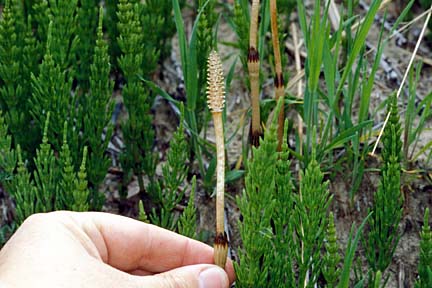As the Digital Media course draws to a close, it is time to reflect upon the Five Minds put forth by Howard Gardner and how these minds can influence our current and future teaching practices, and in reality, our current and future roles as global citizens.
What is my mission as an educator? I feel that cellist Yo-Yo Ma, in his response to Gardner’s question about what constitutes good work (Chapter 6, The Ethical Mind) really laid out a formula for the teaching profession. To paraphrase:
– to per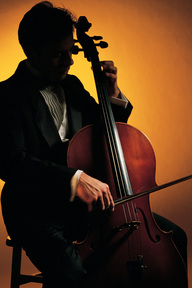 form as excellently as possible
form as excellently as possible
– to be able to work together with others and develop common understanding and trust
– to pass on knowledge, skill, understanding, and orientation to succeeding generations so that the joy of learning may endure
I have taken liberties with his statement about music and applied it to teaching, but I feel the idea of “good work” spans all professions. I will take that a step further and say that, as a Catholic school educator, it is inherent upon me to model Christ-like action to all I meet. From our school mission statement come these words:
Welcome to Our Lady of Perpetual Help School, educating Pre-School to Eighth Grade students in the Diocese of Allentown, Pennsylvania. We are proud of our school and glad to have you here. We strongly believe that close cooperation between the school and the home is essential in promoting the education of the children entrusted to our care.
At Our Lady we strive to maintain a caring and peaceful environment in which all students can feel comfortable. We believe that this atmosphere will facilitate learning and nurture respect among students, teachers, and parents.
In his remarks on the ordering of the Five Minds, Gardner states that “From the beginning one must begin by creating a respectful atmosphere toward others. In the absence of civility, other educational goals prove infinitely harder to achieve.”
With such a noble, and at times daunting, mission for educators, to whom do we turn for our models? Who are the leaders in our quest to meet the needs of today’s students, the students who need 21st century skills developed and nurtured with 21st century tools by educators with a 21st century mindset?
We cannot operate in isolation, relying solely on our own knowledge and creativity to meet the needs of our students. And so we develop our Personal Learning Networks, our groups of fellow educators, leaders in the field, gurus as it were, from whom we learn about the latest and greatest. These individuals point us to the cutting (or bleeding) edge, are often the first to try the tools or offer new ways to use old tools, who are willing to give it a go and let us know how it went. As the network expands and we participate in sharing opportunities, we ourselves occasionally may be the ones who offer a new twist, a fresh outlook, a way around a stumbling block.
Being an old-timer, I am reminded of a shampoo commercial that showed a girl talking about a shampoo, and she told two friends, and they told two friends, and so on and so on… And just like viral video, the good ideas spread. The more groups you are part of, the more opportunities you have to get in on what is happening. How have I picked up on “the buzz”? What constitutes my PLN?
I must start with the DEN. The Discovery Educator Network was the door-opener for 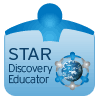 me. Back in January of 2006 I applied to be a STAR educator and had some correspondence with one Lance Rougeux, who decided that I should not withdraw my application just because I felt I might not be able to do all that was expected of me. I am very glad he took a chance on me. Attending my first PETE&C that February was like opening the door from Kansas to Oz. There was no turning back.
me. Back in January of 2006 I applied to be a STAR educator and had some correspondence with one Lance Rougeux, who decided that I should not withdraw my application just because I felt I might not be able to do all that was expected of me. I am very glad he took a chance on me. Attending my first PETE&C that February was like opening the door from Kansas to Oz. There was no turning back.
In addition to the fabulous learning opportunities afforded by the DEN, I have a blogroll listed here that is just a microcosm of the ed tech blogosphere. I must admit, however, that during the school year, and especially now taking a course, my opportunity to read my favorite bloggers’ thoughts has shrunk due to time constraints. I find it hard to choose just one to recommend. If I had to narrow the list I suppose I could choose two that have expanded my horizons more than any others. First is Steve Dembo’s Teach42 blog. Steve is known as a guru of Web2.0 tools, but he is passionate about empowering teachers and improving education. His post on Feet on the Ground or Head in the Clouds is a great example of what he is about and what he tries to do. An interesting conversation developed in the comment section as well. And I truly do agree with him that little tricks and tools may be just the thing to get a teacher energized, get the kids excited and engaged, and it may not solve the mysteries of the universe, but if it makes a difference in some classroom for some child, then why not give it a try?
And if I had the chance to get an autograph or choose someone with whom I would love to have conversation over dinner, it would be Vicki Davis, aka Cool Cat Teacher. I could write several paragraphs on what I have learned by reading her posts. She shares the successes and failures, the tips for beginners because she remembers being one herself. She never lowers her standards and expects the best from her students and gives her best in return. How she finds time to sleep I have no idea, but it is obvious from her posts that her family comes first. I loved her post about burning three different colored candles, each representing a different facet of her life, and if one was burned down farther than the others she knew things were not balanced in her life. Can’t find the actual post, but it was very thought-provoking.
 So now when I look into the mirror (the dreaded mirror test?) I must ask myself if I am living up to my potential as an educator. Am I producing “good work” and encouraging others to do the same, both students and fellow teachers? Some days it is hard to motivate, and sometimes teachers are harder to motivate than students. And yet, aren’t we all students? Shouldn’t we all be life-long learners? That is the underlying theme of my Blackberry Alley blog. I began as a student, and went on to become a teacher, who has realized that she will always be a student, even as she continues to have students of her own. What I see in the mirror needs a little work (and I don’t mean just the wrinkles) but there is some promise. As I continue to develop my “five minds” perhaps I can be a model for my students of respect, good work ethic, and a touch of creativity. With periodic innoculations from my PLN as well as my students, I may yet pass muster.
So now when I look into the mirror (the dreaded mirror test?) I must ask myself if I am living up to my potential as an educator. Am I producing “good work” and encouraging others to do the same, both students and fellow teachers? Some days it is hard to motivate, and sometimes teachers are harder to motivate than students. And yet, aren’t we all students? Shouldn’t we all be life-long learners? That is the underlying theme of my Blackberry Alley blog. I began as a student, and went on to become a teacher, who has realized that she will always be a student, even as she continues to have students of her own. What I see in the mirror needs a little work (and I don’t mean just the wrinkles) but there is some promise. As I continue to develop my “five minds” perhaps I can be a model for my students of respect, good work ethic, and a touch of creativity. With periodic innoculations from my PLN as well as my students, I may yet pass muster.
Citations
Man Plays Cello. Jupiterimages Corporation. 2006.
Discovery Education. 13 October 2009
<http://streaming.discoveryeducation.com/>
Buyer, Elizabeth. mirror.jpg. May 2005. Pics4Learning. 13 Oct 2009 <http://pics.tech4learning.com>



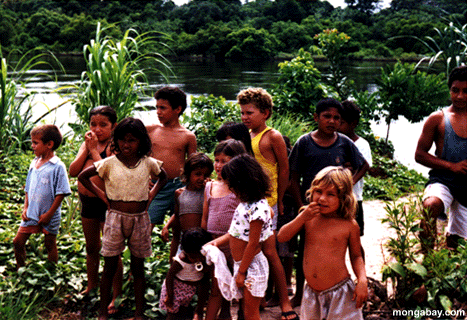 There is much in this topic of rainforests that lends itself to developing respectful and ethical minds. Very often when we think of rainforests we think of the vegetation, the animal life, but do we think of the human inhabitants of these regions as well? In this virtual field trip the students not only learn of rainforest layers and beautifully exotic flora and fauna, but they have a chance to glimpse totally different lifestyles and to compare them with their own. They have the opportunity to appreciate the similarities and differences among people of very different cultures and realize that children all over the world are basically the same.
There is much in this topic of rainforests that lends itself to developing respectful and ethical minds. Very often when we think of rainforests we think of the vegetation, the animal life, but do we think of the human inhabitants of these regions as well? In this virtual field trip the students not only learn of rainforest layers and beautifully exotic flora and fauna, but they have a chance to glimpse totally different lifestyles and to compare them with their own. They have the opportunity to appreciate the similarities and differences among people of very different cultures and realize that children all over the world are basically the same. would have been no suitable image theme, so I created a leaf image to symbolize the overall theme. I regret that before I began Photoshopping the leaf I neglected to note the source, so there is no actual citation for the original leaf in the Google Earth file. I created 6 leaves with the numbers 1-6 for the stops on the tour, and removed the white background. Then they were uploaded as customized placemarks. The remaining images in the project can be found within the contents of each place mark either as a static image or a linked image. To expand this project further, and I hope to do this before we actually use it in the classroom, I would insert additional links to images of plants and animals. Time constraints caused me to use just a smattering of external links for images. I am planning to insert a few more images of the more unusual species.
would have been no suitable image theme, so I created a leaf image to symbolize the overall theme. I regret that before I began Photoshopping the leaf I neglected to note the source, so there is no actual citation for the original leaf in the Google Earth file. I created 6 leaves with the numbers 1-6 for the stops on the tour, and removed the white background. Then they were uploaded as customized placemarks. The remaining images in the project can be found within the contents of each place mark either as a static image or a linked image. To expand this project further, and I hope to do this before we actually use it in the classroom, I would insert additional links to images of plants and animals. Time constraints caused me to use just a smattering of external links for images. I am planning to insert a few more images of the more unusual species. form as excellently as possible
form as excellently as possible me. Back in January of 2006 I applied to be a STAR educator and had some correspondence with one Lance Rougeux, who decided that I should not withdraw my application just because I felt I might not be able to do all that was expected of me. I am very glad he took a chance on me. Attending my first PETE&C that February was like opening the door from Kansas to Oz. There was no turning back.
me. Back in January of 2006 I applied to be a STAR educator and had some correspondence with one Lance Rougeux, who decided that I should not withdraw my application just because I felt I might not be able to do all that was expected of me. I am very glad he took a chance on me. Attending my first PETE&C that February was like opening the door from Kansas to Oz. There was no turning back. So now when I look into the mirror (the dreaded mirror test?) I must ask myself if I am living up to my potential as an educator. Am I producing “good work” and encouraging others to do the same, both students and fellow teachers? Some days it is hard to motivate, and sometimes teachers are harder to motivate than students. And yet, aren’t we all students? Shouldn’t we all be life-long learners? That is the underlying theme of my Blackberry Alley blog. I began as a student, and went on to become a teacher, who has realized that she will always be a student, even as she continues to have students of her own. What I see in the mirror needs a little work (and I don’t mean just the wrinkles) but there is some promise. As I continue to develop my “five minds” perhaps I can be a model for my students of respect, good work ethic, and a touch of creativity. With periodic innoculations from my PLN as well as my students, I may yet pass muster.
So now when I look into the mirror (the dreaded mirror test?) I must ask myself if I am living up to my potential as an educator. Am I producing “good work” and encouraging others to do the same, both students and fellow teachers? Some days it is hard to motivate, and sometimes teachers are harder to motivate than students. And yet, aren’t we all students? Shouldn’t we all be life-long learners? That is the underlying theme of my Blackberry Alley blog. I began as a student, and went on to become a teacher, who has realized that she will always be a student, even as she continues to have students of her own. What I see in the mirror needs a little work (and I don’t mean just the wrinkles) but there is some promise. As I continue to develop my “five minds” perhaps I can be a model for my students of respect, good work ethic, and a touch of creativity. With periodic innoculations from my PLN as well as my students, I may yet pass muster.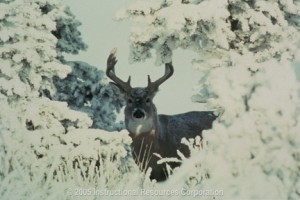 to get the students adjusted to the blog site, but hope to try VoiceThread in the near future. There is so much my students can learn, not only about Canada, but about the native people to that area, the climate, even variations in the English language. We are all excited at what may unfold during the year. I only have one web cam, but I hope to make use of it during our interaction with the Canadian class, which is 2 hours behind us time wise.
to get the students adjusted to the blog site, but hope to try VoiceThread in the near future. There is so much my students can learn, not only about Canada, but about the native people to that area, the climate, even variations in the English language. We are all excited at what may unfold during the year. I only have one web cam, but I hope to make use of it during our interaction with the Canadian class, which is 2 hours behind us time wise. After following the link to the
After following the link to the  think I sometimes get a little jaded and perhaps always see a down side to every up. (Yeah, it’s a great tool, but how can I fit it in? How can I find time to master it? My twenty-four hours are full. My teachers will never try it.) So, when I say I am excited about something, I mean it.
think I sometimes get a little jaded and perhaps always see a down side to every up. (Yeah, it’s a great tool, but how can I fit it in? How can I find time to master it? My twenty-four hours are full. My teachers will never try it.) So, when I say I am excited about something, I mean it. I am excited because my kids are excited. Not everyone of them, but so many. It didn’t take much, but what it took was allowing them to be “content creators”. Not being so regimented. Letting them know that they had a say in something and could create an identity. The simple little blogging site we have been using has opened up a whole new world for them, and therefore for me. “Please, sir, I want some more.”
I am excited because my kids are excited. Not everyone of them, but so many. It didn’t take much, but what it took was allowing them to be “content creators”. Not being so regimented. Letting them know that they had a say in something and could create an identity. The simple little blogging site we have been using has opened up a whole new world for them, and therefore for me. “Please, sir, I want some more.” even as I was learning myself barely a step ahead of them. But they were far less fearful than I. Last year there were a few students, almost always girls, who would blog when the spirit moved them, writing short stories, poetry, anything. Fussing over their page backgrounds and font colors, although the choices are somewhat limited on the site. I was pleased that a few were doing it for fun rather than for a grade.
even as I was learning myself barely a step ahead of them. But they were far less fearful than I. Last year there were a few students, almost always girls, who would blog when the spirit moved them, writing short stories, poetry, anything. Fussing over their page backgrounds and font colors, although the choices are somewhat limited on the site. I was pleased that a few were doing it for fun rather than for a grade. Enter year three. Since this blog of mine is hosted by
Enter year three. Since this blog of mine is hosted by  represent themselves on their blogs. The lightbulb appears over my head when I see that…they love it. They absolutely love it. A simple little thing like creating a character that could be cool, or silly, or wild…green mohawk, guitar in one hand, cell phone in the other; little microphone-clutching divas and tiny sports figures. But they owned it, they controlled it, they created it. (one rule: no cigarettes or weapons)
represent themselves on their blogs. The lightbulb appears over my head when I see that…they love it. They absolutely love it. A simple little thing like creating a character that could be cool, or silly, or wild…green mohawk, guitar in one hand, cell phone in the other; little microphone-clutching divas and tiny sports figures. But they owned it, they controlled it, they created it. (one rule: no cigarettes or weapons) make my case for spelling and grammar and punctuation). Almost every one of them listed in their first post that their goals were to reach out to other students, learn about them, communicate with them, have those students visit and read their blog posts, leave comments. In scanning the long list of challenge participants, younger ones with their teachers and older ones (ages 14-17) who entered on their own because they have their own personal blogs and want to communicate and want others to find them and read their thoughts, I have come to realize that they all seek the same thing. To create something, and to have someone notice that they have created something, and hopefully to receive feedback to show that their creation has value.
make my case for spelling and grammar and punctuation). Almost every one of them listed in their first post that their goals were to reach out to other students, learn about them, communicate with them, have those students visit and read their blog posts, leave comments. In scanning the long list of challenge participants, younger ones with their teachers and older ones (ages 14-17) who entered on their own because they have their own personal blogs and want to communicate and want others to find them and read their thoughts, I have come to realize that they all seek the same thing. To create something, and to have someone notice that they have created something, and hopefully to receive feedback to show that their creation has value. correlation between blogging and other content creation among teens. In my students grades 6 through 8 I see the eagerness of the girls surpasses the boys, and they are already going beyond the scope of the project. After learning how to insert a widget into the sidebar (their choices were a flag counter or ClustrMap) one girl was clever enough to figure out how to insert a second widget, a virtual pet, just by reading other student blogs and noticing what others had done. And since I was absolutely fine with that, the floodgates opened and they began searching for more ways to individualize.
correlation between blogging and other content creation among teens. In my students grades 6 through 8 I see the eagerness of the girls surpasses the boys, and they are already going beyond the scope of the project. After learning how to insert a widget into the sidebar (their choices were a flag counter or ClustrMap) one girl was clever enough to figure out how to insert a second widget, a virtual pet, just by reading other student blogs and noticing what others had done. And since I was absolutely fine with that, the floodgates opened and they began searching for more ways to individualize. may not be met, but perhaps being permitted some freedom to showcase their thoughts, their artwork, their favorite websites or games, will make them begin to think outside of the box in other areas also. Perhaps their enthusiasm will even move a few teachers to get involved. When you teach third graders to enter a one sentence blog post and see it on “their page” and then find one of them has gone home and written 5 posts on his own and is requesting publishing (so what if 2 of them are jokes)…well I can’t help feeling that something good is going on.
may not be met, but perhaps being permitted some freedom to showcase their thoughts, their artwork, their favorite websites or games, will make them begin to think outside of the box in other areas also. Perhaps their enthusiasm will even move a few teachers to get involved. When you teach third graders to enter a one sentence blog post and see it on “their page” and then find one of them has gone home and written 5 posts on his own and is requesting publishing (so what if 2 of them are jokes)…well I can’t help feeling that something good is going on.